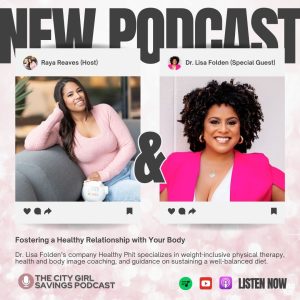Have you ever read an e-mail from a friend, co-worker, or potential business contact that had spelling errors, incorrect punctuation and poor sentence structures? Those errors are easily spotted. Even if we proofread something may be missed, but 1 error as opposed to 10 makes a big difference.
We all know the importance of properly formatted e-mails in the professional environment, but it’s also important to ensure e-mail etiquette is followed when sending e-mails from your personal inbox. If you have a side venture or business, outside of your normal job, you send e-mails to friends and family, or any other use, properly formatted e-mails with good grammar is always important. The CGS Team is sharing some tips to help you follow e-mail etiquette for e-mails sent for work, business, pleasure or anything else!
Subject Line
The subject line is one of the most important parts of an e-mail message. Not only does the subject convey what the e-mail is about, but it can also convey what action (if any) is required by the reader. In a work environment, starting your subject line with “Action Required”, “Reminder”, or “Response Requested” can help the reader easily identify the importance of the email.
If your email is time sensitive, including a due date in your subject line can provide a sense of urgency. For example, if you are a team manager and need one of your associates to complete a file review in the next 24 hours, using the subject line “Action Required: File Review Due in 1 Business Day” clearly identifies that action is needed, what the action item is, and when it is due.
When sending personal or other professional e-mails, it is not necessary to start your subject line with the items listed above. Instead, providing a short description of the e-mail’s content will do. If you are following up on a networking contact, include the name of the event in the subject line.
As an example, if you are following up with a person you met while networking at an insurance conference, an appropriate subject line would read “2nd Annual Women’s Insurance Conference – Follow Up”. This helps the reader remember that they actually met you at an event they attended, ensuring they don’t disregard your e-mail as spam or junk.
E-Mail Body
The body of your e-mail is essential in order to convey a clear and concise message. In our fast-paced work days, most people don’t take the time to read every word of an e-mail. People usually skim the contents of an e-mail to identify any important information. Making your content easy to read will help make sure nothing is missed. There are a few ways to do this, including:
• Avoiding long paragraphs of content whenever possible
• Using bullets or table to help identify numbers or lists of information
• Using extra spaces to separate key points and ideas
• Reduce unnecessary content or conversational items
The easier your e-mail is to skim for information, the better chance the reader will understand the message. It’s also important to use reader-friendly fonts and text colors. 12pt font is the most common and is used by a majority of people. Black or dark blue font is also popular for e-mail use.
Avoid using different font selections. If you need to bold important information, stick with bold throughout the e-mail and avoid using italics. Try to stick with one form of formatting, but if you need an additional form, go with underlining.
The same applies for highlighting text. If you need to highlight important information, do so in one consistent color. Multiple colors can be distracting and confusing to the reader. Also, remember that the use of ALL CAPITAL LETTERS LIKE THIS represents urgency or shouting. Unless you are sending an angry e-mail (which we hope you aren’t), then avoid using the caps lock!
Also, avoid using acronyms like LOL, emoticons and unnecessary pictures in professional e-mails. Restrict use of such items to friends or family. Lastly, always use spell check and proofread.
Following Up and Replying (CC, BCC, and Reply All)
If you haven’t received a response from an e-mail you previously sent, review the original e-mail to confirm that the purpose or request was easily identified.
If your message was informal and not requesting anything, it’s possible the reader read the e-mail and moved on. When you need a response and clearly requested an action item, allow 48 hours for a response. With urgent requests, allow 24 hours. If you haven’t heard back after the allotted time frame, it is acceptable to send a follow up reply. When doing so, include the original message, either through forwarding or as an attachment.
When replying to an e-mail, it’s important to check who truly needs to be included. If an e-mail request was sent to you and a group of people, but you only have to speak on your portion, it’s not necessary for your reply to include all of the people on the original message. If you need to include a select few, use the CC function. For your reference, review the following functions:
• Reply – Replies only to the original sender
• Reply All – Replies back to the original sender and anyone else CC’d and BCC’d on the initial message
• CC – Means Carbon Copy and allows you to include anyone who the original message isn’t intended for, but a copy for them may be beneficial
• BCC – Means Blind Carbon Copy and allows you to include anyone without disclosing who is being copied
Greetings & Signatures
When opening the body of the e-mail, try to appropriately great the reader. If you are e-mailing your manager, keep it professional with a “Hello” or “Good Morning/Afternoon”. When appropriate, use Mrs., Ms., and Mr. When sending personal e-mails or following up with network contacts, a simple “Hi” is always effective.
Unless you are sending an e-mail to a friend, a proper signature is great e-mail etiquette. Just about all e-mail providers allows you to create signatures. Your signature should always include your first and last name, e-mail address, and phone number (unless you prefer not to show it).
When e-mailing business clients or prospective clients, your signature should include everything list above as well as: job title, business name, business address or website, social media links and a short business description or promotional phrase. Avoid extremely long signatures, stick with only important information.
Who knew there were so many rules for e-mail etiquette?! We know it seems like a lot, but if e-mail is your only form of communication, it is important to get a clear message across. You don’t want to lose out on potential work or contacts because your e-mail was sub-par. Do you have any advice for sending effective e-mails? Do you have a high response rate? Share your tips and experiences to help us all learn! Leave a comment below!





